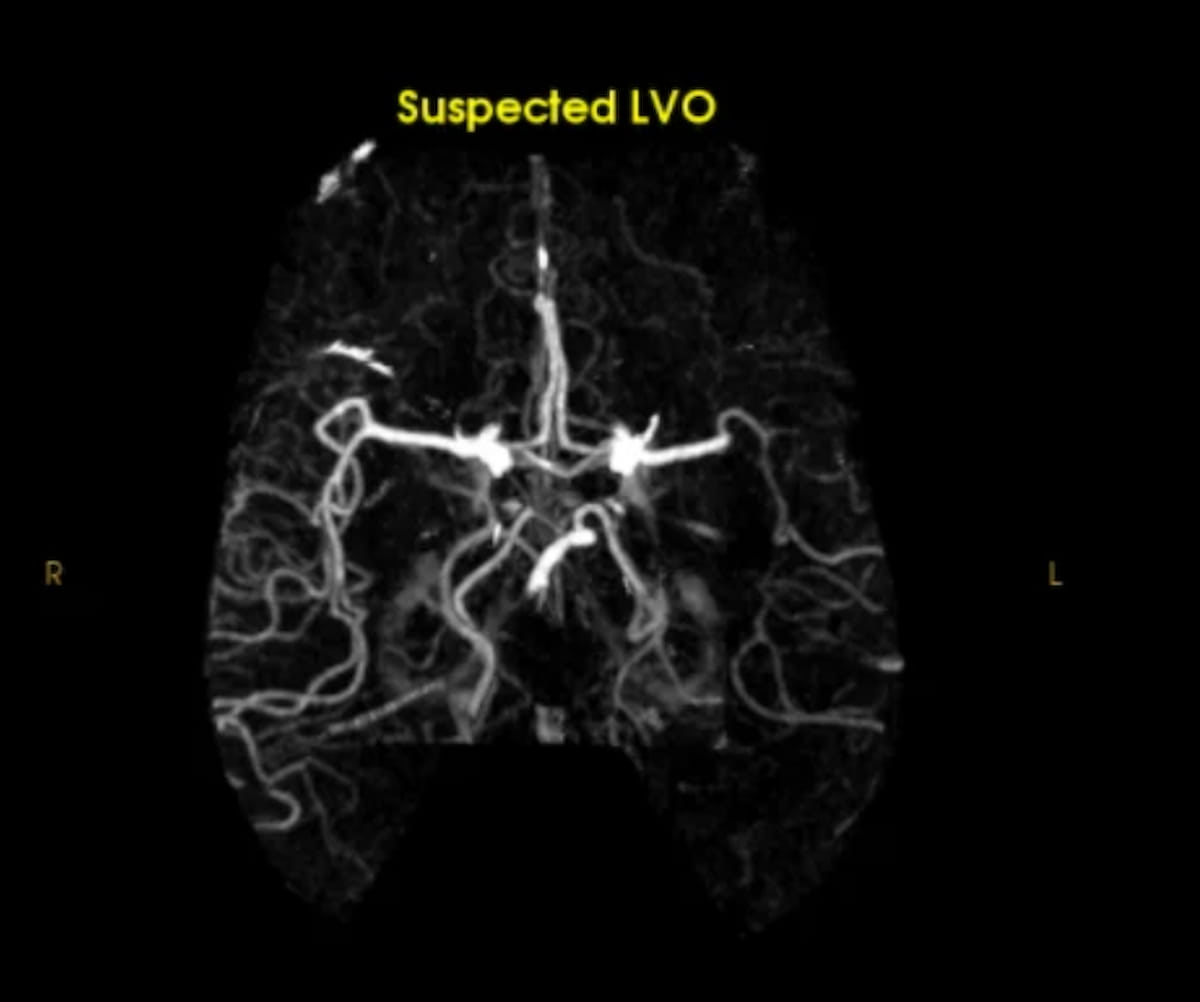Comparative AI Study Shows Merits of RapidAI LVO Software in Stroke Detection
The Rapid LVO AI software detected 33 percent more cases of large vessel occlusion (LVO) on computed tomography angiography (CTA) than Viz LVO AI software, according to a new comparative study presented at the International Stroke Conference (ISC).
In new research comparing two AI software products for stroke detection on computed tomography angiography (CTA) scan, the Rapid LVO software demonstrated significantly enhanced detection of large vessel occlusions (LVOs).
For the comparative retrospective study, presented at the International Stroke Conference (ISC), researchers compared Rapid LVO (RapidAI) and Viz LVO (Viz.ai) in 1,525 code stroke patients. Researchers defined LVOs as occlusion or high-grade stenosis of the intracranial internal carotid artery (ICA) or the middle cerebral artery (MCA), according to the study.
Here one can see the assessment of an M1 segment occlusion with the AI-enabled Rapid LVO. In new findings presented at the International Stroke Conference, researchers found that Rapid LVO detected 146 positive cases of LVO in comparison to 110 positive LVO cases diagnosed with Viz LVO. (Image courtesy of RapidAI.)

The study authors found that Rapid LVO detected 146 positive cases of LVO in comparison to 110 positive LVO cases diagnosed with Viz LVO. The researchers also noted that Rapid LVO also ruled out 94 percent of LVO-negative cases in comparison to 91 percent for Viz LVO.
“Trusting the accuracy of clinical AI tools is critically important, especially for time-sensitive conditions like stroke,” noted lead study author Harmeet Sachdev, M.D., a neurologist affiliated with Good Samaritan Hospital in San Jose, Calif. “By comparing two leading AI-driven tools, we now have a clearer understanding of performance differences, including important distinctions in sensitivity and specificity.”
The researchers noted that the Viz LVO software missed detection in 26 percent of the LVOs and attributed 23 percent of these cases to failure of the software to process cases.
“The substantial number of LVOs missed by the VIZ software could lead to delay in LVO diagnosis and treatment times,” cautioned Sachdev and colleagues.
(Editor’s note: For related content, see “AI Software for CT Detection of Large Vessel Occlusion Facilitates Reduction of Triage Time for Acute Stroke,” “Aidoc Launches AI-Powered Neuroimaging Software for Vessel Occlusion Detection on CT” and “Can Multimodality AI Enhance CT Detection of Medium Vessel Occlusions?”)
Reference
1. Sachdev H, Ong K, Marklein S, Hudson A, Flores M. Detection of LVO using AI: evaluating RapidAI versus VizAI in detection of large vessel occlusion on CT angiography in a large consecutive patient series of 1,591 code strokes. Presented at the International Stroke Conference, February 4-7, 2025, Los Angeles. For more info, visit https://professional.heart.org/en/meetings/international-stroke-conference .
Can CT-Based AI Radiomics Enhance Prediction of Recurrence-Free Survival for Non-Metastatic ccRCC?
April 14th 2025In comparison to a model based on clinicopathological risk factors, a CT radiomics-based machine learning model offered greater than a 10 percent higher AUC for predicting five-year recurrence-free survival in patients with non-metastatic clear cell renal cell carcinoma (ccRCC).
AMA Approves Category III CPT Codes for AI-Enabled Perivascular Fat Analysis from CT Scans
April 9th 2025Going into effect in 2026, the new CPT codes may facilitate increased adoption of the CaRi-Heart software for detecting coronary inflammation from computed tomography scans pending FDA clearance of the technology.